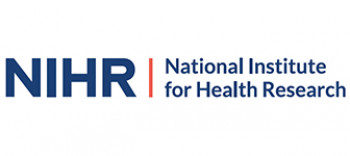
Research: The LEARN Project
A realist review of interventions used to prevent and reduce the use of restrictive practices on adults with learning disabilities.
intro
Research summary
- September 2020 – July 2022
There is an emerging political and public pressure to reduce and prevent the use of restrictive practices globally. National guidance specifies that, while restraint may be used on rare occasions, de-escalation, prevention and person-centred therapeutic approaches tackling the root cause of challenging behaviour should be the first course of action. Despite this, recent statistics indicate a significant increase in restraint used on adults with learning disabilities (LD) in English hospitals. As a result, the government is being urged to explore in detail the context and reasons for such dramatic increases.
The term ‘restrictive practices’ includes the use of observation, seclusion, physical restraint, mechanical restraint, rapid tranquilisation and/or other chemical restraint. All forms of restrictive practices are physically and emotionally damaging to service users and put strain on staff who, on the whole, are trying to do their best. People who have experienced restrictive practices such as restraint describe them as frightening and traumatising. Families, carers and staff often report frustration, physical injury, reduced quality of life and burnout from their caring roles.
A number of interventions have been implemented in healthcare services over the last decade to address this issue - Positive Behaviour Support (PBS), Safewards, the Six Core Strategies, REsTRAIN Yourself. Despite their widespread use, there is no unifying theory that explains how or why these methods are supposed to ‘work’ in reducing the use of restrictive practices. This review aims to fill a knowledge gap by looking at how (not whether) specific places, setting, make up of people and environments influence any change with regards to the use of restrictive interventions on vulnerable people.
quote
Use of restraint on patients with autism and learning disabilities in hospitals in England has risen to alarmingly high levels. 22,000 incidents of restraint were reported in 2017 and 38,000 incidents in 2020. This equates to an average of 100 restraints a day, or 1 restraint every 15 mins.
research summary
Project method and objectives
Aim of the review
To gain a deeper understanding of how, why, for whom, and in what circumstances approaches used to prevent and reduce the use of restrictive practices on adults with LD (who may also have autism or mental health co-morbidities) are most successful.
Review question
What are the causative mechanisms by which interventions that are designed to prevent and reduce restrictive practices are believed to result in their intended outcomes for people with LD?
Objectives
- To conduct a realist review to understand how interventions can prevent and reduce the use of restrictive practices on adults with LD in NHS and independent sector settings.
- To provide recommendations to improve policy and practice regarding interventions that are designed to prevent and reduce restrictive practices on adults with LD.
Methodology
The project will use a theory-driven approach to identify the main factors which influence the success or failure of approaches implemented in NHS and independent sector settings with the view to preventing and/or reducing the use of restrictive interventions on people with LD. Through this approach, researchers will aim to:
- consult with key topic experts part of our research management and advisory groups
- hold several consultation workshops with experts by experience and healthcare professionals that work with the LD population
- perform a systematic search of the evidence base to refine the initial programme theory
Dissemination and impact
Stakeholders will be involved in the review, allowing for better knowledge transfer throughout. To increase the visibility and impact of the research, the findings will be disseminated through knowledge exchange with stakeholders and policymakers using social media (Twitter, blogs and podcasts), publications in peer-reviewed journals, conference presentations, and formal and informal reports. The project will produce a National Institute for Health Research report identifying factors for the success or failure of approaches, including an executive summary for health care professionals and a lay summary for service users and their families.
Findings will also be presented at relevant regional, national and international conferences. Two peer-reviewed papers will be submitted for publication, a review protocol and a findings paper. To ensure maximum reach, findings will be published on an open-access platform. Finally, a paper based on the findings will be produced for the Equalities and Human Rights Commission.
researchers
Research team
Featured researchers
Co-researchers
- Prof John Baker, University of Leeds
- Dr Peter Baker, University of Kent
- James Ridley, Edge Hill University
- Michaela Thomson, Mersey Care NHS Trust
- Gary Bourlet, Learning Disability England (LDE)
- Beth Morrison, Positive and Active Behaviour Support Scotland (PABSS)
funding
With funding from

National Institute Health Research
contact
Contact us
For general enquiries about the Mental Health research cluster, you can contact its lead Prof Joy Duxbury.
Project enquiries
If you have questions about The LEARN Project, you can contact:
